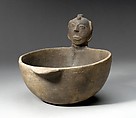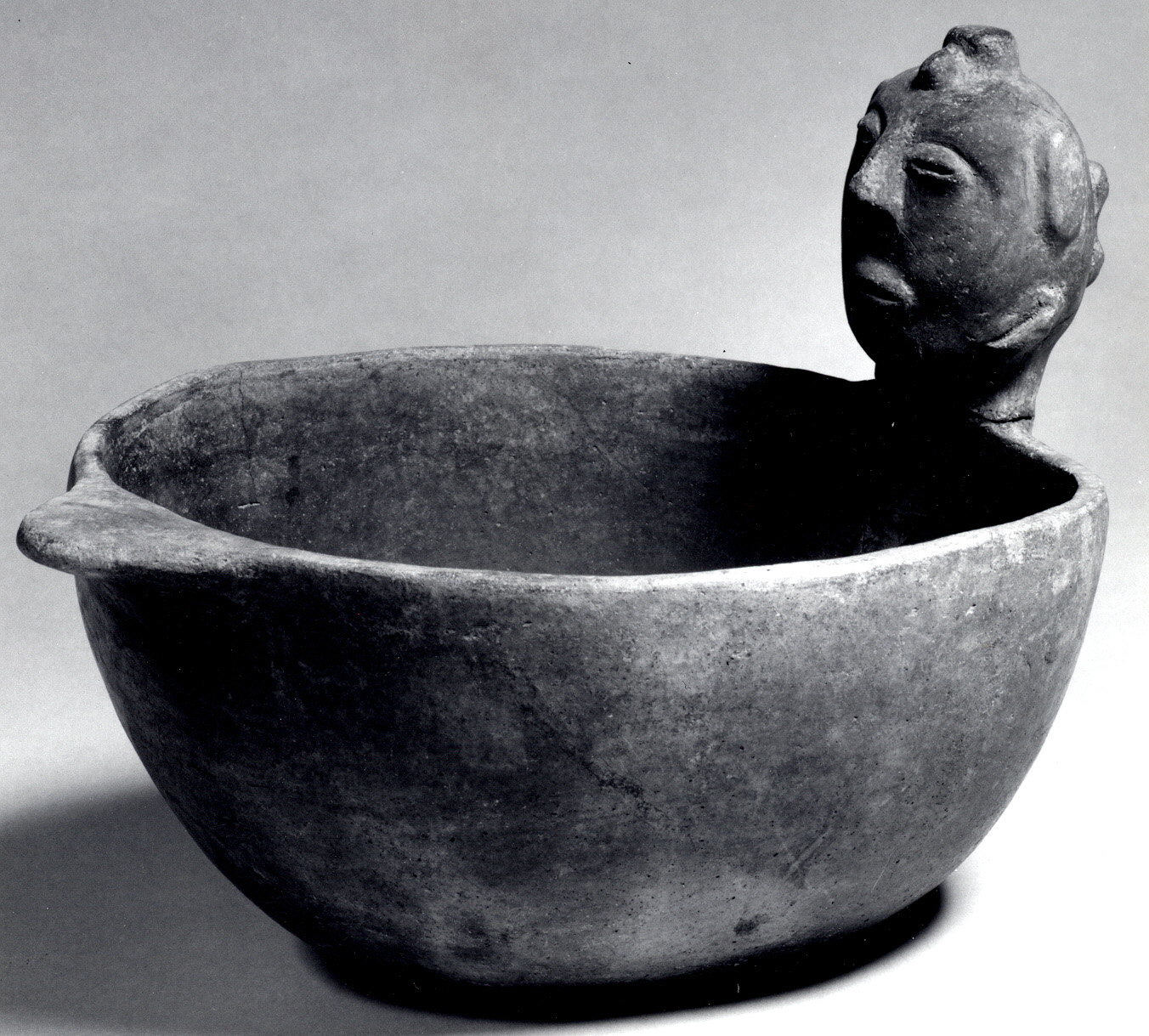Bowl, Head on Rim
Not on view
The human head poised on the rim of this ceramic bowl is counterbalanced by a horizontal luglike "tail," a common feature on bowls of this period. While of apparent practical purpose, the tail is a visual compliment and formal balance to the head with its discernibly human aspect. Facing into the bowl, the round head with its high nose and puffy eyes is topped by a series of intriguing knots that may indicate a special hairstyle, perhaps denoting rank or status.
Mississippian pottery was discovered in quantity in the late nineteenth and early twentieth centuries when large stretches of the Midwest and South began to be extensively farmed and the ancient mounds were broken into or plowed down. Often associated with, or buried in, actual mounds, the vessels were dubbed moundbuilder at the time, and the question of who made them was a subject of much conjecture. They are now understood to have been made by the peoples of the Mississippian culture, which flourished in the late centuries before the arrival of Europeans in North America. The present example is one of a number of ceramic vessels that, in 1879, was an early gift to the Museum. At the time they were to be from a mound site called New Madrid on the Mississippi River in Missouri.
Due to rights restrictions, this image cannot be enlarged, viewed at full screen, or downloaded.
This artwork is meant to be viewed from right to left. Scroll left to view more.



